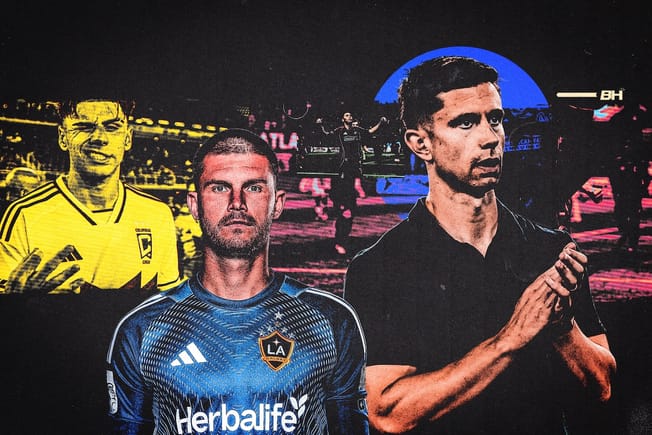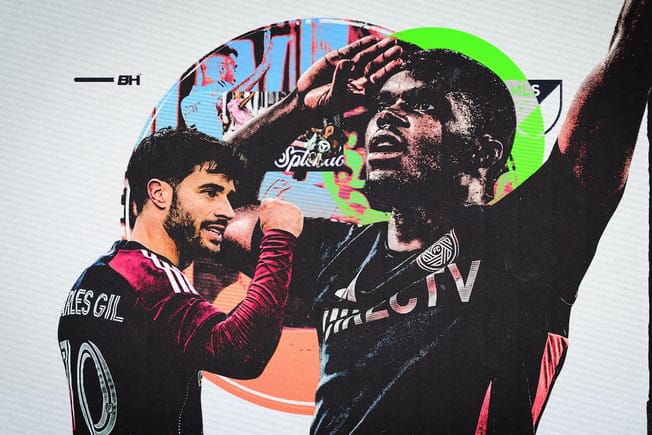Soccer is a game of chaos, one that is often decided by a single play.
For Sporting Kansas City and the Vancouver Whitecaps, that single play started this Saturday during the 22nd minute.
After a clumsy touch in the attacking third by Johnny Russell, Vancouver pounced on the turnover and played the ball out wide to right wingback Marcus Godinho, who found striker Lucas Cavallini dropping into the midfield.
A couple of touches later and the Caps’ Cristian Dajome was running onto the ball in the right corner of the penalty area. Kansas City defensive midfielder Oriol Rosell came over to issue what looked like a shot-preventing tackle only for the ball to fall to Cavallini, who was trailing behind Dajome. Rossel stuck a leg out, Cavallini went to ground, and the referee Ted Unkel awarded the Whitecaps a penalty kick.
According to Second Spectrum, a penalty kick is worth 0.78 xG, meaning that the penalty taker has better than three-out-of-four odds of converting the goal. That’s a steep price to pay for a single defensive infraction in the box.
The silver lining for Sporting Kansas City on Saturday was the fact that they didn’t just have an average keeper between the sticks: they had Tim Melia. Melia, who American Soccer Analysis called “the best penalty stopper in the world”, has only allowed 15 penalty goals in 28 attempts. That means that takers have only had a 54% success rate on their penalties against Melia, which is light-years below the expected rate.

Standing in his goal, Melia was armed with data. It’s not uncommon for goalkeepers to have printouts of shooter tendencies and shot locations in the small hope of gaining an edge in the light of overwhelming odds. As Cavallini walked to the spot, Melia likely knew that the Whitecaps forward had scored on his last two penalties, both to the right side of the goal.
As Cavallini struck the ball with his left foot, Melia went to dive to the shooter’s right, but stopped his movement after realizing his error: Cavallini hadn’t gone to the left or right. Instead, he executed the “panenka”, which is a cheeky chip shot down the middle of the goal.
Cavallini smiled and turned to celebrate with his teammates. That panenka was all the Whitecaps needed to secure the victory.
Ice cold penalty from Lucas Cavallini! 🥶 pic.twitter.com/QJdbrMuWUG
— Major League Soccer (@MLS) May 29, 2022
Because of the optics behind the shot, the panenka is pretty darn polarizing. When it fails, it looks really bad.
If the keeper doesn’t jump to one side, a soft chip into their hands is cosmetically the worst outcome. Sergio Aguero had to apologize on Twitter after missing a panenka last year and players have even been released for missing one.
The reality of penalty taking is that the optimal strategy is one of randomness. The shot is so close to the goalkeeper that most of the time, the goalkeeper has to make a split-second decision about which way to jump as the ball is being shot, rather than making that decision based on the post-shot trajectory of the ball. This means that, more often than not, the keeper has to guess.
This turns penalty taking into more of a game of chance than a showcase of two players’ skills. Now, the randomness is important here because if the goalkeepers or penalty takers show a hard tendency, the other side will be able to exploit that tendency in their decision-making.
It shouldn’t surprise anyone that most penalties taken in MLS go to either the left or the right. Likewise, when a goalkeeper makes a guess about which way to jump it’s almost always to the left or right. They very rarely stay in the middle. The same answer for why players don’t take many panenkas is probably true for why goalkeepers don’t stand their ground in the middle of their goal on a regular basis.
If they stand still and the taker places their shot to the left or right, they’re going to look really dumb just standing there in the middle of the net.
What the panenka adds to a penalty-taker’s repertoire is a chaotic twist to the standard “shoot left or shoot right” paradigm. Using Second Spectrum’s shot velocity data, I watched all of the PKs with a velocity of less than 20 meters per second and determined that since 2020, there has only been one missed panenka out of nine attempts. That’s an 88.9% success rate! It’s not surprising that the list of panenka takers includes some of the sauciest players in the league, either: Raul Ruidiaz (x2), Taty Castellanos (x2), and Emanuel Reynoso are all on the panenka list.
It’s hard to tell analytically whether or not the panenka is truly “good” since it makes so few appearances. However, from a practical sense, the panenka can be a devastating weapon when used properly, like how Castellanos employed it last season.
One of my favorite Taty PK sequences from last season.
— Justin Egan (@EganSoccerWords) May 30, 2022
#1: Goes for the panenka against Miami.
#2: Drills it down the middle vs. Cincy.
#3: Slonina is so concerned about the middle he just stands there and Taty slots it left.
Taty is pure chaos and game theory. pic.twitter.com/1Vk3XbQSpW
Castellanos has been very good from the penalty spot for NYCFC. Since 2020, he’s converted all but one of his penalties including two successful panenkas. On August 14th against Inter Miami, he scored a panenka. His next penalty was September 18th vs. FC Cincinnati. With the keeper maybe thinking that Castellanos would avoid the middle after his last attempt, New York City’s striker stayed at it and drilled his shot right down the middle. Finally against the Chicago Fire on October 27th, Chicago goalkeeper Gabriel Slonina looked like he was so concerned about protecting the middle of his net that he just stood there while Castellanos scored an easy PK to the left.
You also have to wonder if that sequence was something that Steve Clark was thinking about during last year’s MLS Cup penalty shootout. With the Cup on the line, Castellanos was called to make the first penalty kick. It was a poorly placed shot to the left, but because of Clark’s middle positioning, Taty’s strike had enough pace to get by him.
The moral of the story? Embrace the panenka. Embrace the chaos.







Comments